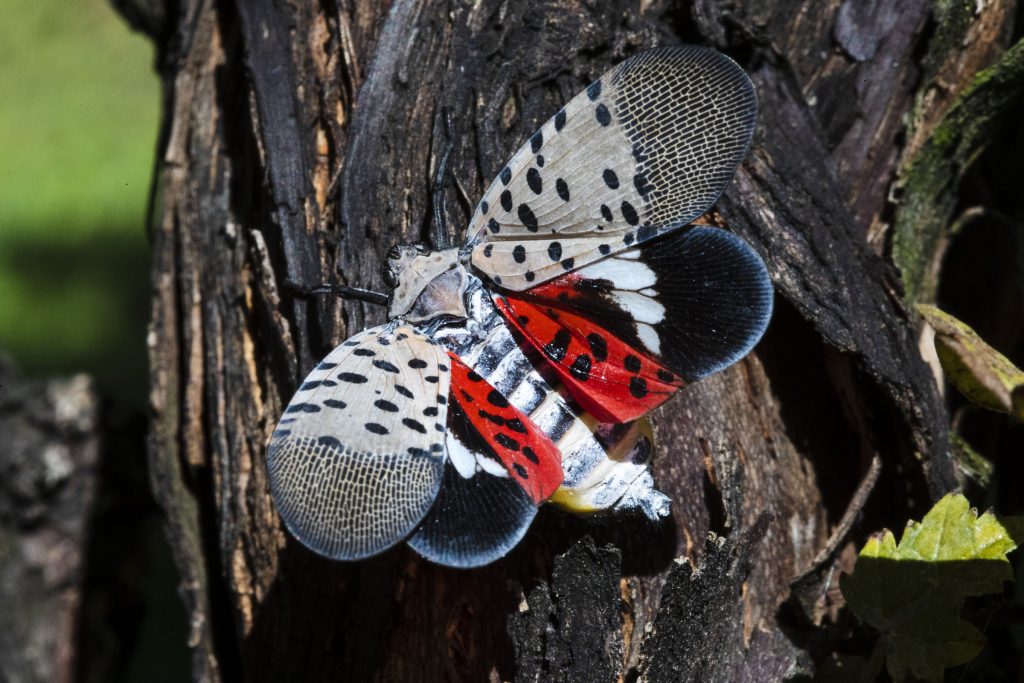Scrape the eggs. Squash the bugs. Report everything.
That’s what you should do if you see a spotted lanternfly or a mass of lanternfly eggs, according to the state Department of Agriculture.
Spotted lanternflies — an invasive pest native to Asia that loves the sap of fruit trees and excretes a sticky mess on leaves and branches — are spreading across eastern Pennsylvania. This week, Luzerne County was added to a state quarantine list as a precaution after lanternflies were reported in the county.
That means owners of businesses that transport produce or goods within or outside the quarantined zone must obtain a lanternfly permit after taking a free online training course.
Those in charge of local farms and orchards say they have not seen lanternflies yet, but plan to keep watch as the growing season nears.
“I don’t know what effect it will have on our crops,” said Greg Heller, owner of Heller Orchards, Wapwallopen.
Heller, who grows and sells apples, peaches and pears, said he was surprised to learn that lanternflies had been spotted in Luzerne County.
He knew it was coming someday, though, he said.
“The Department of Agriculture was around looking for it last fall,” Heller said.
The Lands at Hillside Farms, a nonprofit educational farm in the Back Mountain, is bracing for lanternflies, said executive director Chet Mozloom.
“Sure we are on the lookout, but we have not seen them here,” Mozloom said.
There are some fruit trees at Hillside, but not nearly as many as would be found at an orchard, according to Mozloom.
“Our main crop is grass,” he said. “So far we are safe.”

ASSOCIATED PRESS FILE
A spotted lanternfly rests in a vineyard in Kutztown in September 2019.
What you can do
Lanternfly eggs are expected to hatch in late April or May.
Anyone who sees a lanternfly egg mass should report it immediately, according to Shannon Powers, spokeswoman for the state Department of Agriculture.
Reports can be made either by calling the toll-free lanternfly hotline at 888-422-3359, or online at https://extension.psu.edu/have-you-seen-a-spotted-lanternfly.
A team of specialists will investigate all reported lanternfly sightings within a few days, Powers said.
Also, it is important to destroy all egg masses, from which dozens of lanternflies can hatch, she said.
Egg masses look like a smear of mud or “dried, smashed bubblegum on the sidewalk” and can be found anywhere outside in an infested area, according to Powers.
To destroy an egg mass, scrape off the surface layer and squash the eggs underneath, she said.
“Scrape off the surface with anything you have handy, even a credit card,” Powers said.
Lanternflies can impact the quality of life for residents of heavily infested areas, she said.
Getting a permit
A spotted lanternfly permit is required “for those working within the quarantine, who move vehicles, products or other conveyances within or out of the quarantine,” according to the state Department of Agriculture.
Anyone who needs to obtain a lanternfly permit may find information on the website of the Penn State Extension at https://extension.psu.edu/spotted-lanternfly-permit-training.
The online training course required to obtain the permit is free to take. States in the quarantine zone have reciprocal agreements that honor permits from other states, according to the department.
The state spotted lanternfly quarantine list includes 26 counties, including Carbon and Schuylkill. Lanternflies were first spotted in the United States in 2014 in Berks County. They spread quickly throughout southeastern Pennsylvania and into neighboring states.

